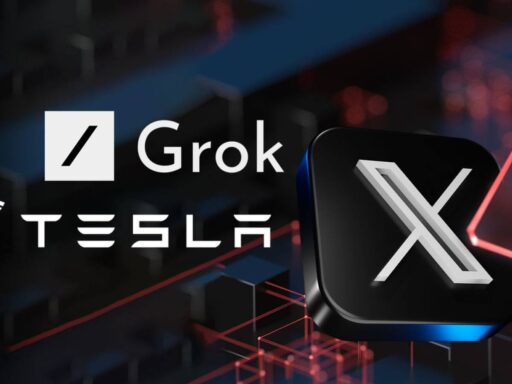Ever feel like artificial intelligence is a members-only club guarded by sky-high price tags or impossible-to-decipher code? You’re not alone—many folks wonder if cutting-edge AI is out of reach unless you work at a tech giant or have an elite degree. The truth is, things are changing fast thanks to the open-source AI boost. If you’ve been hearing about tools like TensorFlow or Stable Diffusion but aren’t sure why everyone’s so excited, buckle up. Today’s wave of open-source innovation isn’t just for coders—it’s putting powerful machine learning tools into the hands of creative tinkerers, small businesses, teachers, artists…even that one friend who still thinks “AI” means robots from sci-fi movies.
We’ll dig into what makes open-source AI tick—from the community-driven energy fueling its explosive growth to real stories where these free tools are making a difference. But let’s be real: with great openness comes some wild west moments (think security headaches and ethical landmines). So grab your coffee and let’s break down the biggest trends shaping today’s open-source AI scene—what’s working, what needs work, and why it matters more than ever.
How Open-Source AI Tools Development Is Changing The Game
Remember when building something with AI meant spending months reinventing the wheel—or begging IT for budget approval? That script has flipped in dramatic fashion lately. Now you can tap into libraries like PyTorch or TensorFlow—the backbone of thousands of projects around the world—without shelling out a dime. It’s almost like being handed every Lego brick imaginable for free and told to build whatever you want.
What really sets this era apart? Collaboration happens on steroids:
- Massive communities converge on platforms like GitHub. Take a peek at Hugging Face Transformers—a hub for pre-trained models—and you’ll see thousands chipping in fixes, translations, tutorials…you name it.
- Ideas flow faster than caffeine through an all-nighter hackathon; Stable Diffusion went from niche experiment to household tool partly because users kept suggesting improvements and sharing results.
- No need to start from scratch: Want image recognition? Speech-to-text? There’s probably an off-the-shelf model already fine-tuned by someone halfway across the globe—and freely shared via sites like Hugging Face Hub.
Check out this quick comparison table showing how popular frameworks stack up in terms of contributors and available models:
| Framework | Contributors (GitHub) | Available Pre-Trained Models |
|---|---|---|
| TensorFlow | >10k | >2k+ |
| PyTorch | >11k | >1k+ |
| Hugging Face Transformers | >3k | Tens of thousands on HF Hub |
| Stable Diffusion (CompVis) | >600 | Diverse models/extensions available |
| *As estimated from public repositories as of mid-2024. | ||
The bottom line? Anyone—even hobbyists working after dinner—can spin up impressive prototypes using these resources without asking permission or draining their wallets.
The Democratization Of Open Source AI Is Breaking Down Barriers
If there’s one thing I hear over coffee with founders and engineers alike: “It used to be that only giants could afford state-of-the-art.” Not anymore.
- You don’t have to mortgage your house for licenses. Open frameworks mean students in Mumbai have as much firepower as researchers at MIT.
- The walls between research papers and production apps keep crumbling—the leap from academic discovery to practical use gets shorter every year.
- This wider pool brings surprising voices into the mix—teachers customizing chatbot assistants for classrooms or nonprofits detecting fake news using tailored NLP models.
Stories pour in daily about unlikely heroes using these tools. One favorite: A group of indie developers combined speech-to-text models (plucked straight from Hugging Face) with translation engines to make emergency hotlines instantly accessible in dozens of languages—all without corporate backing.
Still skeptical about impact? Platforms like Hugging Face host tens of thousands of publically available models right now—that’s serious scale! And according to recent “State of AI” reports, venture capital investment in open source startups keeps climbing as investors spot fresh opportunities outside Silicon Valley mainstays.
If you’re looking for hard data on which tools lead the charge or want examples grounded in reality—not hype—try searching “AI frameworks comparison open source” or “Open source AI case studies.” These searches turn up side-by-side breakdowns plus stories ranging from solo inventors tinkering after hours to large teams revolutionizing entire industries.
Navigating Security Challenges With Open Source Artificial Intelligence
Straight talk time: opening up codebases isn’t always rainbows and unicorns. While transparency builds trust (“See how my algorithm works!”), it also cracks doors wide enough for bad actors—or well-intentioned amateurs—to slip through.
A few key worries pop up most often:
- Poorly secured models can become playgrounds for adversarial attacks (think tricking image classifiers into seeing turtles as rifles).
- Lack of centralized oversight sometimes leads to inconsistent quality control—or lets biases creep deep inside training data unnoticed until too late.
But here’s some good news: crowdsourcing solutions works both ways!
Developers flag vulnerabilities quickly because everyone sees everything,
and experts worldwide pitch patches faster than many commercial vendors can approve updates.
Looking ahead?
For organizations weighing risks versus rewards,
the big move is combining best practices from both worlds—
open review plus robust internal policies.
Want tips on locking things down?
Try searching “Open source AI security challenges”
to get guides written by people who’ve faced—and fixed—these exact issues.
So yes,
open-source brings new hurdles—but it arms us with bigger crowds
(and smarter defense strategies)
than closed systems ever could dream.
And that’s just scratching the surface
of today’s open-source AI boost…
Stay tuned—the story’s only getting started!
AI frameworks comparison open source
Ever tried to pick the right AI framework and felt like you were stuck choosing between coffee flavors at a hipster café? It’s overwhelming. TensorFlow, PyTorch, Hugging Face Transformers – they’re all over tech Twitter, GitHub stars are off the charts, but which actually fits your needs?
Here’s where things stand: open-source AI frameworks are driving the Open-source AI boost for one big reason – everyone can pitch in. Think of them as LEGO sets for building intelligence. Need flexibility? PyTorch feels like sculpting with clay; it lets researchers tinker and prototype fast (which is why academia loves it). Meanwhile, TensorFlow is more like assembling IKEA furniture: great for scaling in production if you follow instructions closely.
Hugging Face has quietly become the go-to place if you want to skip straight to using world-class models without sweating over training code. Their Transformers library offers pre-trained language models by the truckload, letting startups and solo devs add NLP magic on a shoestring budget.
- TensorFlow: Super powerful, industrial-grade tools—used everywhere from Google Photos to Tesla’s Autopilot.
- PyTorch: Intuitive for rapid prototyping and research; powers OpenAI projects and many cutting-edge discoveries.
- Hugging Face Transformers: The “app store” of pre-trained NLP models – just plug and play.
According to GitHub stats, these open-source frameworks attract thousands of contributors worldwide. That means bugs get squashed quickly, features roll out faster than ever, and the documentation keeps getting better thanks to a passionate user base.
Venture capital open source AI
Remember when people thought open-source software couldn’t make money? Fast-forward to today: investors are lining up at the door of companies built around Open-source AI boost stories.
Take Hugging Face as an example—a company rooted entirely in sharing code and models openly. They raised tens of millions in funding because VCs see how accessible platforms accelerate industry-wide adoption (and yes, that translates into serious business potential).
Why are VCs suddenly obsessed with this space?
– No license fees = lower barriers = massive user growth.
– Ecosystem lock-in through communities instead of contracts.
– The trust factor: Transparency builds confidence among enterprise buyers weary of black-box solutions.
This isn’t just hype—look at Stable Diffusion’s viral growth after their image generation model went public under an open license. Suddenly everyone from indie artists to big brands could create stunning visuals with no upfront costs.
Open source AI case studies
What happens when you unleash advanced AI tools into the wild? Real innovation—plus some unexpected plot twists.
One standout story comes from Stable Diffusion, whose text-to-image generator practically broke Reddit last year. Developers swarmed its GitHub repo within days of launch. Result? An explosion of art apps, browser plugins—even memes—all built atop this one piece of code.
A few other real-world wins fueled by the Open-source AI boost:
- NLP breakthroughs via Hugging Face Transformers: Startups have rapidly added smart chatbots or sentiment analysis just by fine-tuning existing models—in weeks instead of months.
- Tesla autopilot enhancements rely heavily on TensorFlow/PyTorch hybrids: Rapid improvements come from crowd-sourced ideas merged back into core libraries—proof that community-driven progress can move as fast as proprietary labs.
- The education sector rides the wave too: Nonprofits use these free libraries for low-cost machine learning bootcamps worldwide—no expensive licenses needed!
This is democratization in action: ideas travel farther because there’s no paywall blocking entry—or creativity.
AI model repositories open source
If you’ve ever wanted an AI model without having a PhD or a stack of GPUs lying around… welcome to paradise! Model hubs like Hugging Face Hub now offer what amounts to an “open bar” for pre-trained brains—everything from chatbots to voice recognition ready out-of-the-box.
| Name | Description / Perks / Audience Fit |
|---|---|
| Hugging Face Hub | Tens of thousands (!) of publically available models across NLP/vision/speech tasks. Great for developers who want quick wins or need proven architectures without reinventing wheels. The backbone behind countless new startups’ MVPs—and plenty of fun side projects too! |
| Papers With Code | Crowdsources not just papers but full implementation links—meaning you can go from theory straight into practice. A goldmine for students & researchers looking for inspiration or validation benchmarks against state-of-the-art results. |
| Torch Hub & TensorFlow Hub | Baked right into each ecosystem; essential resources packed with vetted modules covering everything from object detection (hello self-driving cars) to deep speech recognition. Tight integration means less hassle juggling dependencies between different stacks. |
The availability here boosts experimentation rates dramatically—it lowers risk so anyone willing to learn can join the party and maybe even spark next year’s big thing. As long as folks remember ethical caveats (watch those data biases!), we’ll keep seeing fresh faces changing what’s possible every month thanks to this Open-source AI boost wave sweeping through tech circles worldwide.
Open source AI community contributions
Let’s get real: Is the “open-source AI boost” just hype, or is it actually making a difference? People ask me all the time—what’s really happening under the hood of this open-source movement? Why should you care about some code on GitHub?
You ever notice how some tech gets better overnight? That’s not magic; it’s relentless collaboration. Open-source AI isn’t run by some suit behind a velvet rope—it thrives because anyone with an idea and grit can join in. I’ve seen developers from Tokyo to Toledo pitch into projects like TensorFlow, PyTorch, and Hugging Face Transformers. When Stable Diffusion 2.0 landed, it wasn’t because one company decided to shake things up—it was thousands of contributors sharing feedback, squashing bugs, and cranking out new features faster than any closed-door team could.
- Community momentum: Projects like Stable Diffusion exploded thanks to fan-made extensions, creative prompt engineering tricks, and wild use cases (from digital art to synthetic data for research).
- Knowledge-sharing: If you’re stumped, odds are someone else has been there—Reddit threads and Discord servers hum with problem-solving energy every day.
- No gatekeepers: The only requirement is curiosity. That means more perspectives—and yes, that leads to robust solutions that work for more people.
Case in point: The Hugging Face Hub now hosts tens of thousands of pre-trained models—each built on someone else’s shoulders. Real users drive rapid iteration cycles that make open-source models practical for everyone from hobbyists building chatbots at midnight to Fortune 500 companies deploying enterprise-grade tools.
AI transparency open source
Let’s talk trust—because if you don’t know what an algorithm is doing behind the curtain, how do you know it won’t blow up in your face? For most folks outside Silicon Valley boardrooms, black-box AI feels sketchy at best.
That’s why open-source AI shines: You can pop the hood yourself (or have a savvy friend do it). Transparency here isn’t just a buzzword; it keeps everyone honest. Anyone can audit the codebase for hidden biases or sneaky bugs—and they do. Research around explainable AI (XAI) shows that transparent systems are easier to debug and less likely to encode accidental discrimination.
This openness breeds accountability:
• Security reviews: It’s not just white hats looking for vulnerabilities—a whole ecosystem keeps watch over high-profile repositories so issues get patched fast.
• User empowerment: Want proof your model does what it’s supposed to do? Fork the repo and see for yourself.
Remember when proprietary software was king? Licensing headaches locked companies out unless they forked over big bucks—and even then, good luck finding out what was going on inside those algorithms! Now compare that with Hugging Face or Stability AI: Their blogs detail exactly how updates work; GitHub commits show who did what last week.
Open source AI funding trends
Money talks—even in open source land. Sure, much of this growth comes from passionate volunteers burning midnight oil—but don’t sleep on the fact that venture capital is pouring serious cash into these projects.
In recent years we’ve watched funding for startups pushing “open-source AI boost” strategies hit all-time highs. Investors aren’t throwing darts—they see commercial value in platforms where innovation compounds through community input rather than siloed R&D budgets alone.
| Project/Platform | Funding Source | Key Impact |
|---|---|---|
| Torch/PyTorch/TensorFlow | Backed by Meta & Google respectively + VC support for offshoots | Pushed deep learning mainstream via free access & hardware compatibility |
| Hugging Face | $100M+ from VCs like Lux Capital & Coatue Management | Became NLP toolkit powerhouse by democratizing language models |
| Stability AI (Stable Diffusion) | $101M raised in latest round (2023) led by Lightspeed Venture Partners | Drove explosion in generative image applications accessible worldwide |
But let me drop this reality check—most successful projects mix crowdsourced sweat equity with strategic sponsorships or donations from industry giants eager not to miss the next breakthrough. There are still hurdles—maintenance burnout is real without steady cash flow or corporate partnership support.
Here’s where opportunity meets responsibility: Companies leveraging these frameworks should give back—not just code but also dollars—to ensure tomorrow’s breakthroughs don’t stall out today due to empty coffee pots and unpaid server bills.
The bottom line? The “open-source AI boost” story isn’t slowing down anytime soon—as long as visionaries keep investing both their brainpower and wallets.






